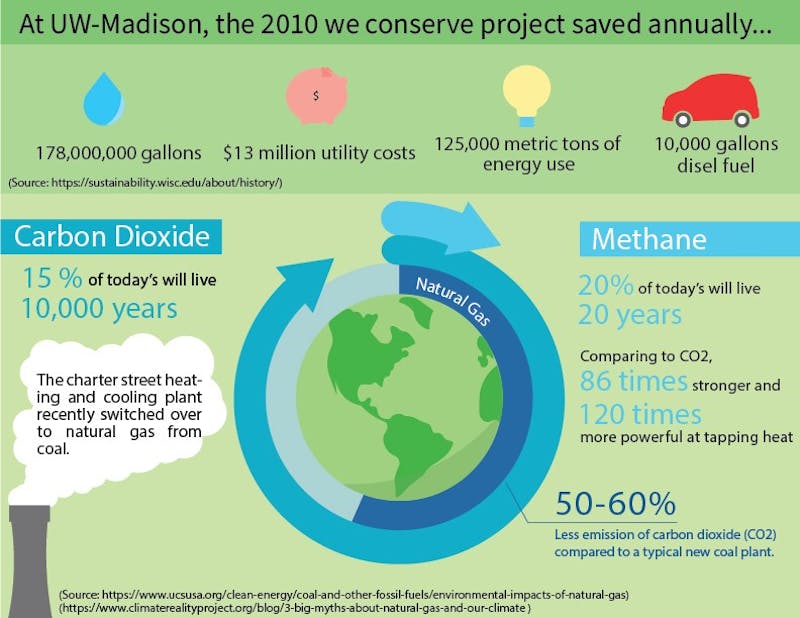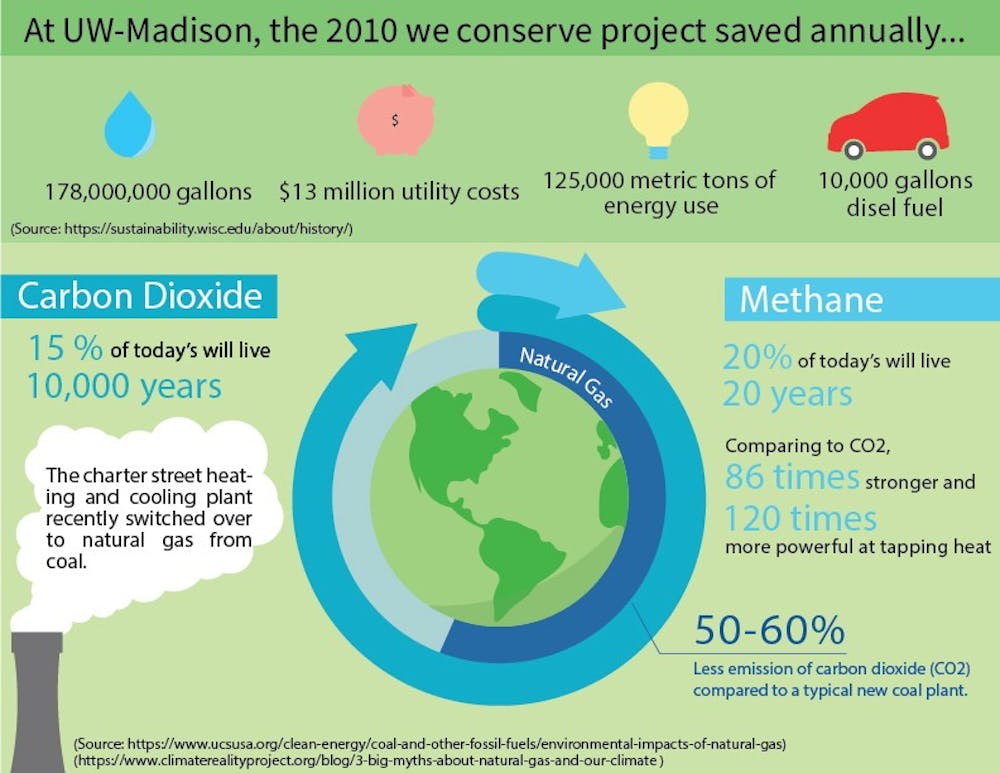

Campus trash receptacles emblazoned with eco-friendly messages may help students feel like they’re doing their part when tossing cans in the recycling bin. However, behind-the-scenes work on campus also has a positive environmental impact.
UW-Madison Facilities Planning and Management is responsible for keeping campus powered. Without FPM, students and staff would be left without essential services like power, heating and cooling.
FPM has taken initiative to lessen their environmental impact by switching from coal to natural gas as a primary fuel source. While burning both of these fossil fuels emits greenhouse gases, natural gas is much cleaner than coal. A large part of UW-Madison’s carbon footprint — the amount of total emission — comes from the choices made, rather than the fuels burned. For instance, UW-Madison is constantly working on construction projects to improve campus.
“If you’re going to build something, you’ve got to consider how the energy goes into sourcing materials and how far the materials had to travel to get here,” Assistant Director for New Technology Directions at the Grainger Institute for Engineering Angela Pakes said.
She said a priority during the planning process for construction of Union South was sourcing materials locally. Because of these efforts, the construction project avoided massive levels of pollution caused by unnecessary shipping of materials.
We Conserve, a project that took place in 2010 on the UW-Madison campus saved energy, water and money.

Pakes said while FPM and UW-Madison departments are working to improve the sustainability of campus infrastructure, the next steps for meaningful change have to come from the people who inhabit campus. If individuals keep consuming energy through heating and cooling or gas from driving as they do now, there’s only so much administration can do.
“We’ve done a lot of effort to change our infrastructure, our buildings, our transportation opportunities,” Pakes said. “But the next big thing we need to rely on [is] students, faculty, staff and visitors to this campus to look at ourselves and say, ‘what can I do better? Do I need to drive my vehicle to campus everyday or can I vanpool? Or carpool? Or bus? Or bike?’”
Another important contribution individuals can make is taking a look at how much energy your home uses, Pakes recommended. In the summer, turn the thermostat up a couple degrees. In the winter, turn it down a few degrees. By wearing or shedding an extra layer and lowering your energy intake, you can limit your carbon footprint and make an immense impact on campus’ energy use.
“It’s easy to wonder what campus could be doing,” Pakes said. “Really what we should be asking ourselves is what can I do?”